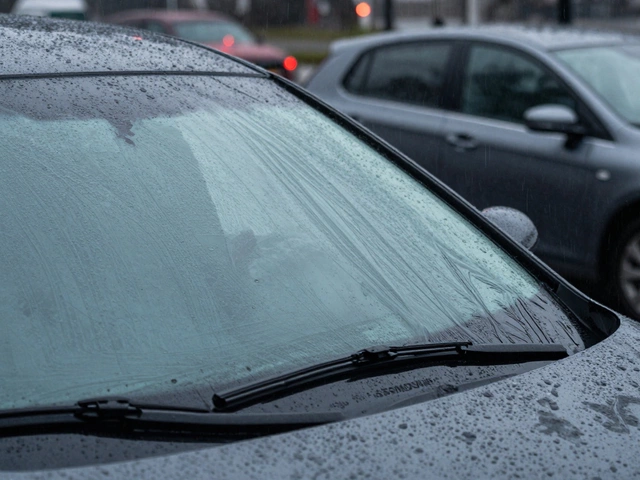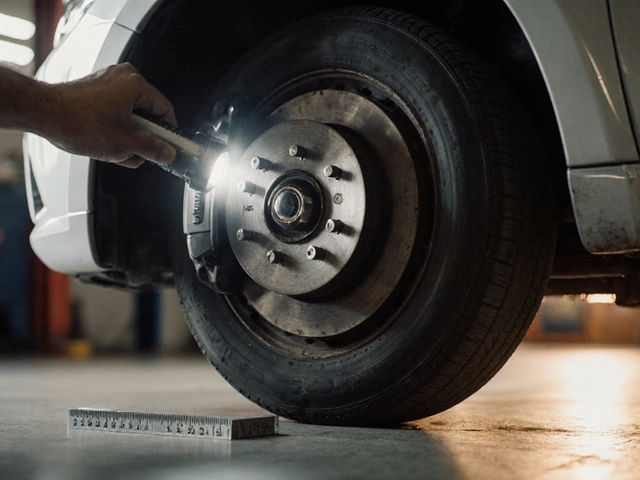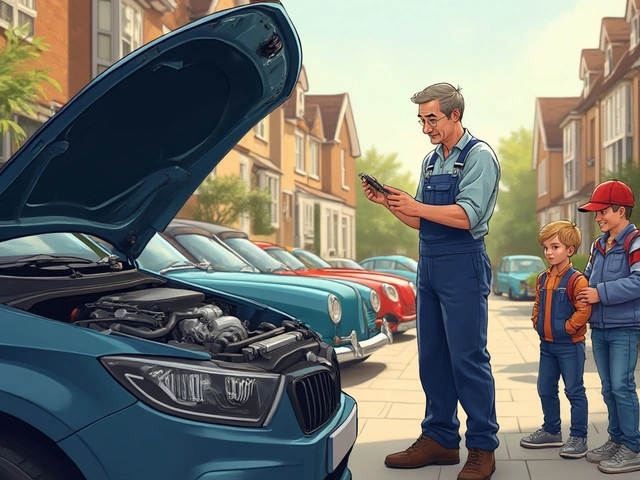When it comes to car maintenance, windshield wipers often take a back seat to other components. Yet, the importance of clear visibility cannot be overstated, especially during unpredictable weather conditions.
Windshield wipers come in various types, and each has its own merits. Your choice can significantly impact your driving safety and comfort. However, picking the right ones isn’t just about size and fit.
Understanding the role of quality wipers, the differences in their types, and what features to look out for is key to making an informed decision. Proper care and timely replacement also determine how effectively they work over time.
Let's dive into why these seemingly minor car accessories deserve your attention and how they can play a pivotal role in providing a clearer view of the road ahead.
- Importance of Quality Windshield Wipers
- Types of Windshield Wipers
- Factors to Consider When Buying
- Maintenance and Care Tips
- When to Replace Your Windshield Wipers
Importance of Quality Windshield Wipers
Driving through heavy rain or navigating a gusty snowy road can become an ordeal without a clear view of what's ahead. Windshield wipers are often underappreciated, yet they play a pivotal role in ensuring road safety. Poor visibility due to ineffective wipers can lead to dangerous situations, making it critical to invest in quality blades. The rubber or silicone edge, often underestimated, needs to work seamlessly with the curved glass surface of your vehicle's windshield to move away the rain, sleet, and even those pesky bird droppings that can distract a driver. A well-maintained pair not only clears away natural elements but also minimizes the glare from oncoming headlights, a crucial aspect during night drives.
Choosing the right wiper blades involves more than just getting the right size. It's about understanding the science behind their design. High-quality wipers adhere more effectively to the glass, ensuring a uniform dispersion of pressure across the blade's length. This even coverage means fewer streaks, less debris left behind, and a clearer view of the traffic. According to a survey from the National Highway Traffic Safety Administration, poor weather conditions, which often impair visibility, contribute to approximately 21% of all vehicle crashes in the United States each year. This startling statistic underscores how critical maintaining your visibility can be to safe driving.
"Visibility is a key aspect of road safety," says John Resek, a renowned automotive safety expert. "Neglecting your windshield wipers is akin to forgetting your seatbelt. They both serve to protect you in different ways."When winter rolls in, regions facing diverse weather conditions need to adopt blades designed for resilience. Heavier, sturdier wipers are suited for snow, while lighter, flexible versions work wonders on rainy days. Investing in the right type not only ensures effective cleaning but prolongs their functionality. Regular inspection is advised; a simple check for nicks, cracks, or tears can prevent mishaps.
A quick move towards eco-friendly options is also becoming evident. More manufacturers are leaning towards sustainable materials that mimic rubber's qualities but with less environmental impact. As drivers become more conscious of their carbon footprint, selecting eco-conscious products without sacrificing efficiency is now possible. Thus, selecting effective windshield wipers isn't just about vehicles; it extends to be a responsible action for the planet.
Types of Windshield Wipers
When it comes to windshield wipers, the market offers a variety of types to cater to different vehicle needs and personal preferences. Understanding the differences between these types is essential for making the right choice. The most common type you'll come across is the traditional frame-style wiper, easily recognizable by its metal framework that holds the rubber squeegee blade in place. These wipers are tried and tested, providing reliable performance in various conditions, though they do have a tendency to collect ice and snow, which can impede their effectiveness in harsher climates.
Beyond the conventional, there are beam-style wipers rapidly gaining popularity. These have a single, solid piece designed to hug the curvature of modern windshields better than frame styles. By offering even pressure distribution, they minimize streaks, leading to improved visibility during adverse weather. If you are seeking durability and quiet operation, beam wipers might just be your go-to option. Another option to consider is the hybrid wipers, which marry the features of both traditional and beam-style wipers. They incorporate a protected design meant to endure extreme weather, making them an ideal pick for those living in regions with varied climates.
"Windshield wipers are often underestimated, but investing in the right type can significantly enhance your driving experience." — Automotive Expert Magazine
Then there are the specialty wipers, such as heated wipers, designed specifically for colder climates. These wipers come with integrated heating elements that effectively melt ice and prevent snow buildup, ensuring you have clear visibility without manual intervention during chilling winters. Another variant includes silicone wipers, which, while relatively new in the market, offer impressive longevity and water-repellent properties by coating your windshield with a thin silicone film each time they are used. Completing our list are flat or spoiler wipers, characterized by a sleek aerodynamic design that provides superior wiping performance even at higher speeds. Judging by your specific needs, understanding these distinct types can help you determine which windshield wipers best suits your situation.
Here's a brief overview to sum up their features:
- Frame-Style Wipers: Efficient and traditional, but can harbor snow and ice.
- Beam-Style Wipers: Offers a sleek, silent, and streak-free wipe.
- Hybrid Wipers: Best of both worlds; resilient in diverse climates.
- Heated Wipers: Ideal for ice-prone areas, keeps your wipers operational.
- Silicone Wipers: Longer lifespan with water-repellent technology.
- Flat/Spoiler Wipers: Perfect for motorway driving, minimizes lift-off.
In choosing the right windshield wiper, consider factors such as regional weather conditions, vehicle specifications, and personal preferences, ensuring that you maintain clear visibility with the optimal solution tailored to your driving environment.
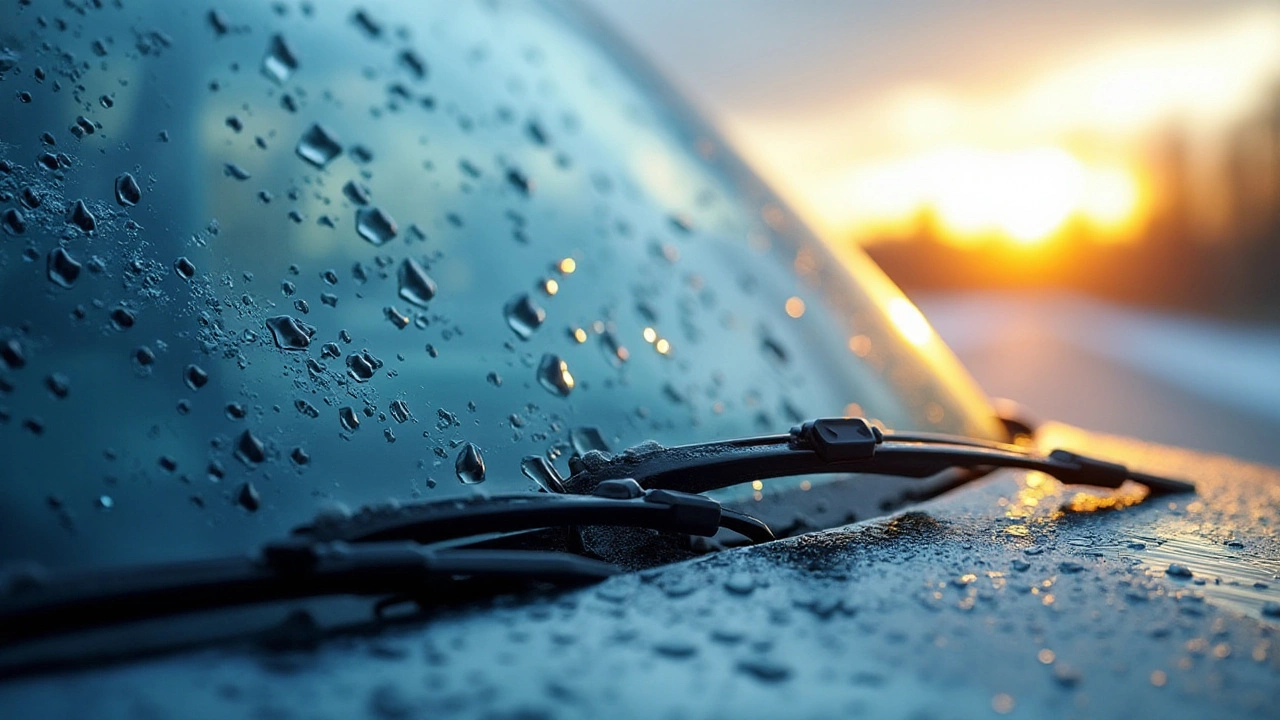
Factors to Consider When Buying
Choosing the right windshield wipers involves more than just picking the right size. The material of the blades plays a crucial role in their performance and longevity. Typically, wiper blades are made from rubber, silicone, or a blend of both. Rubber wipers are often more affordable, providing decent performance in moderate conditions but might not be the best choice for extreme weather. Silicone blades, on the other hand, often promise longer lifespans and better water repellence, which can be especially useful during heavy rains. Keep in mind, though, that silicone tends to be pricier. Assess your typical driving conditions before deciding on the material.
The fit and compatibility with your car model are also paramount. There are conventional frame-style, beam-style, and hybrid blades, each suiting different vehicle setups. Beam-style wipers are becoming popular due to their sleek design and superior performance in harsh weather; they lack external frames, which reduces ice and snow buildup. It's advisable to consult your vehicle’s manual or a reputable service partner to identify which type is best for your car's windshield design and curvature.
Another factor to weigh is the climate in your region. For those living in areas with frequent rain or snow, selecting blades that excel in clearing water quickly and efficiently is key. In contrast, if you live in a sunny area, wipers built to withstand UV damage without cracking are better. Noise is another consideration—no one enjoys the screeching sound of poor-quality blades. Some brands now offer noise-reducing technologies that provide a smoother, quieter wipe.
"A clear windshield is a clear journey. It's not just about wiping away rain; it's about enhancing every drive." - Car Care Council
Price can be a compelling factor, but budgeting for cheap isn’t always wise. Investing in quality wipers can save frustration and ensure longer-lasting performance. Sometimes, spending a little more upfront will mean fewer replacements and optimal functionality. It's worth checking reviews, as they can offer real-world insights into the distinction between brands and models. Consider how frequently you drive, the speed at which you travel, and how these affect the wear and tear on your wipers.
Lastly, explore additional features such as water-repelling coatings that help beads slide off effortlessly, ensuring every wipe leaves the cleanest surface. Safety features like wear indicators can be helpful, alerting you when it’s time for a change. Advanced features can add to the cost, but if they align with your needs and enhance your driving experience, they can be a valuable investment. In today's market, many products offer enhanced technology for convenience, making buying a truly tailored set of wiper blades more accessible than ever.
Maintenance and Care Tips
Taking care of your windshield wipers is not just a good idea—it’s necessary for ensuring your safety on the road. Properly maintained wipers can significantly enhance your driving experience by ensuring clear visibility. It’s easy to overlook them, but with just a bit of regular attention, you can extend their lifespan and maintain their efficiency. Start by cleaning the wiper blades regularly. Dust, grime, and road debris can accumulate on the blades, causing them to smear instead of clear water. Use a damp cloth with a bit of windshield washer fluid to gently wipe down the rubber edge. Do this at least once a month, or more frequently if you live in an area with frequent rain or snow.
If you’re someone who frequently drives through dusty environments or during peak pollen seasons, it would be handy to create a habit of giving your wipers a quick clean every time you fill up your fuel tank. The rough particles that wind up sitting on your windshield can cause wear on the wiper edges, which reduces their effectiveness. One surprising, yet effective hack is to occasionally rub the blades gently with rubbing alcohol after cleaning them. This restores some of the natural oils to the rubber, keeping them pliable and reducing streaking.
Another significant aspect of wiper maintenance involves washing your car. A dirty windshield makes it difficult for any wipers to perform well. Give your windshield a good clean often using a microfiber cloth and a good quality cleaner tailored for glass. Use circular motions to avoid streaks and ensure the entire surface is spotless. Also, make sure to top up your windshield washer fluid. Driving without it is risky, especially when unexpected grime hits your screen. Use a formula that’s suited for your local climate – whether you need it to cut through ice in the winter or repel bugs in the summer.
Carl Cooper, an automotive maintenance expert, once said, "Regular upkeep of your wiper blades, paired with a clean windshield, can drastically reduce the chances of accidents caused by poor visibility."
Often, we don’t realize the importance of proper parking for the longevity of our windshield wipers. Parking your car in a shaded area or using a sunshade can prevent the rubber on your wipers from cracking due to direct sunlight. In colder regions, avoid using wipers to de-ice your windows, as this can damage the blades. Instead, use a scraper to clear heavy snow and ice before using the wipers. Lastly, remember the golden rule: if your wipers are leaving streaks or unable to effectively clear the windshield, it is time to replace them. Generally, replacing wipers every six months to a year maintains their effectiveness.
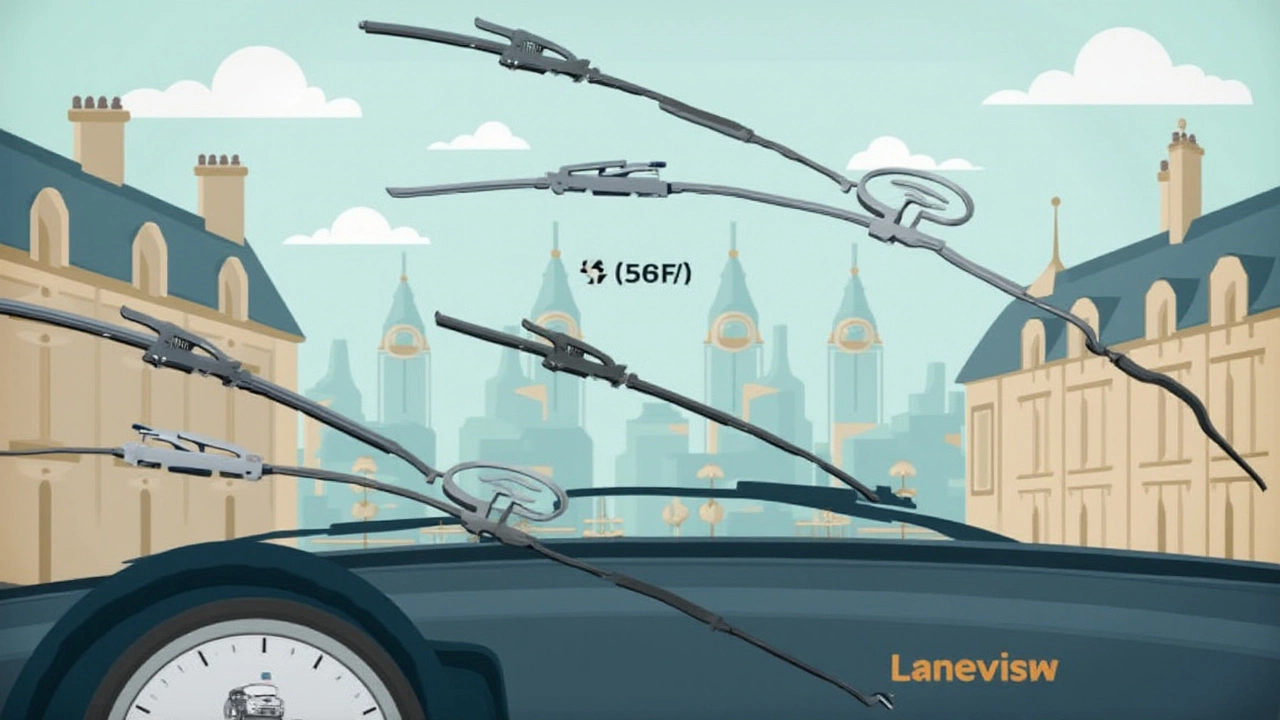
When to Replace Your Windshield Wipers
Knowing the right time to replace your windshield wipers can be the difference between maintaining clear visibility and driving blind through a rainstorm. The lifespan of wiper blades can vary significantly based on use and exposure to elements. Typically, experts suggest changing them every six months to a year, but don't rely solely on the calendar. Pay attention to how well they are functioning in real-time conditions. Are they leaving streaks, making strange noises, or simply not clearing the water as they should? These are the first signs that your windshield wipers might be on their last legs.
Weather plays a crucial role in the degradation of wiper blades. Sunlight, heat, and environmental factors like salt from the sea can accelerate the wear of the rubber. For instance, in more temperate and less harsh climates, wipers may last longer, while in areas with heavy snow and salt exposure, you might find yourself replacing them more frequently. Keep an eye out for splits or cracks in the rubber, as this can happen even without regular use. Additionally, the formation of brittle edges can happen over time, diminishing the edge's ability to conform to the windshield's curve and effectively clearing water.
The material of your wipers also plays a role in their longevity. Traditional rubber wipers are widely used and affordable, but they tend to wear out faster than their silicone counterparts. Silicone blades, though more expensive, offer increased durability and performance in harsh weather. They also have the added benefit of leaving a slight hydrophobic coating on the windshield, improving repellence to rainwater for a brief period. If you notice squeaking or chattering sounds during operation, it might indicate the blade is not in full contact with the windshield due to age or damage. This is often a cue that change is necessary.
“A high-performance windshield wiper is as important as any other safety feature in your vehicle.” – Road Safety FoundationWhen assessing the efficiency of your current wipers, don't forget that even the best blade will degrade quicker if improperly installed. If your wipers aren't performing as expected despite being relatively new, it may be worth reviewing how securely they are attached and whether the arms have the correct angle and tension. Over time, the arms themselves may have issues like rust or a weakening spring, impairing their effectiveness.
Develop a habit of regularly checking your windshield wipers as part of routine vehicle maintenance. Not only does this prevent surprises on a rainy day, but it also serves as a proactive measure for your safety on the road. You can also consider investing in protective measures like using a windshield cover when parking outdoors for long periods. It ensures that environmental damage is minimized and helps in extending the life of your wipers. Always be attentive to how well your wipers are doing, as they are a critical component that directly impacts your ability to drive safely in inclement weather conditions.


